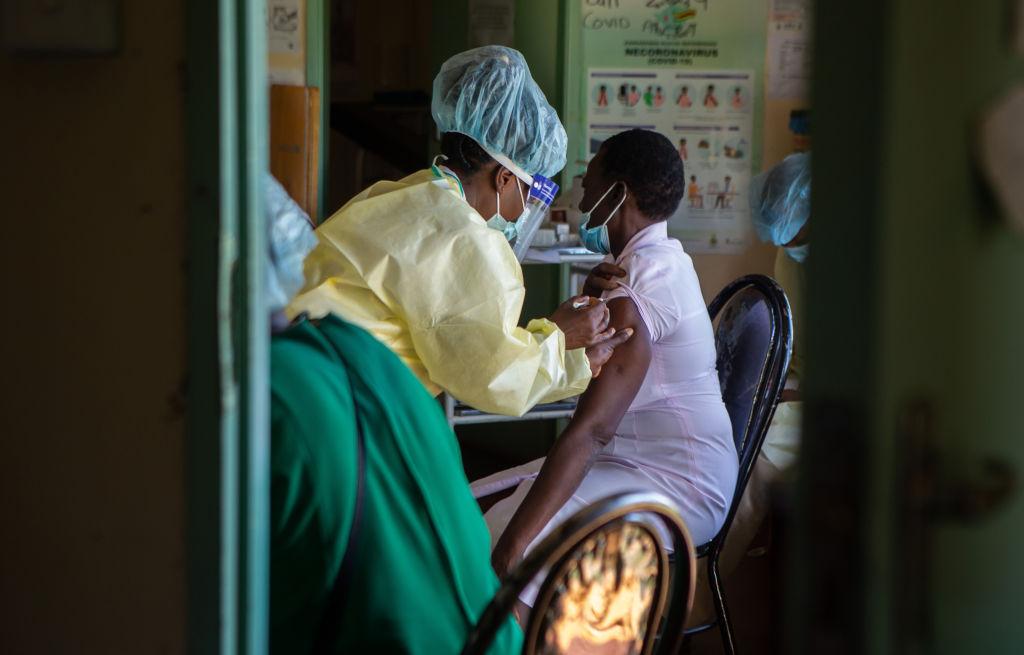Global health governance from the grassroots
Posted By Ngaire Woods and Ok Pannenborg on June 2, 2021 @ 11:08

The World Health Assembly met [1] last week amid a slew of proposals—most recently from the United Nations Independent Panel for Pandemic Preparedness and Response [2]—to create stronger, enforceable global rules for tackling future infectious disease outbreaks. A new global pandemic treaty, more robust and independent international institutions, and an international pandemic financing facility are all in the mix. But a bottom-up strategy might work better.
A separate review [3] by the World Health Organization earlier this year highlighted four ways to strengthen global health governance. It called for a centralised approach to bolstering countries’ preparedness for health emergencies; a worldwide notification system to ensure robust monitoring of compliance; global capacities such as a genomic sequencing infrastructure; and closer coordination among international institutions, including the WHO, the World Organisation for Animal Health, the Food and Agriculture Organization and the United Nations Environment Programme.
These are all worthy objectives. But is a top-down approach the best way to pursue them? To answer that question, global health experts should pay more attention to successful grassroots efforts to combat disease.
Consider the fight against onchocerciasis, or river blindness. In the 1970s, it was led by World Bank President Robert McNamara, Merck CEO Roy Vagelos and WHO Director-General Halfdan Mahler. But over time, a bottom-up strategy whereby almost half a million village community health workers owned the problem [4], proved more effective. A multi-country study [4] in 1994 and 1995 showed that when communities are responsible for organising their own distribution of ivermectin (the drug that treats onchocerciasis), coverage is higher than when the health system delivers the drug. Another report [5] by the Carter Center highlights the role that kinship and local networks play in tackling this disease.
Similarly, the Bombay Leprosy Project [6] is a longstanding program in Mumbai’s largest slums. BLP community volunteers, trained by paramedical workers, conduct door-to-door surveys [7] among the population in order to detect new cases. During the pandemic, it has been one of the most effective channels for delivering personal protective equipment (PPE), healthcare, food and now Covid-19 vaccinations to the poorest of the poor in areas where the Maharashtra state and federal governments are essentially absent.
The importance of bottom-up initiatives in responding to the pandemic is not limited to developing countries. The United Kingdom’s government invested heavily in a centralised national test-and-trace service. But evidence [8] suggests that even relatively underfunded local schemes performed better, leading the government to rethink [9] its approach.
Increased efficacy is not the only reason to consider a grassroots strategy. Politically, many countries—perhaps scarred by their experience of trade blockages at the outset of the pandemic, the worldwide scramble for PPE supplies and vaccine nationalism—are currently more focused on national resilience than global commitments. A new emphasis on local resilience may therefore find a much more receptive audience in communities around the world. One of the shortcomings of international health regulations during the Covid-19 pandemic has been the failure to prepare, provide and coordinate adequate resources at the country level. A bottom-up approach could change this.
Investments in community-level health-surveillance capacity will likely be key to tackling this and future pandemics. Here, the right financial incentives are crucial. Rural smallholders in Africa and Asia will be the first to know when some of their chickens or ducks seem sick—possibly with an avian influenza virus that could trigger a human pandemic. But if farmers who report a disease outbreak face the prospect of culling [10] their entire flock without receiving adequate compensation [11], they may well decide not to share the information.
Likewise, as Stefan Dercon of the University of Oxford has argued [12], investing in the reach and quality of community healthcare and in health workers’ protection is vital to ensure the continuation of basic medical services. These include vaccination [13], provision of antiretrovirals, supplementary feeding, maternal health, bed net distribution and malaria treatment. Community health workers are also essential for shielding [14] the most vulnerable in densely populated areas and for tracking and controlling disease.
Such bottom-up approaches will require government support, including financing of local efforts. Any backing may need to be anchored in law to be sustainable, as was the case with the funding of Brazil’s public-health research institution Fiocruz [15] in the early 20th century. Such statutes may protect organisations from attempts to reduce budget allocations or finance other programs at their expense.
Historically, global health and environmental cooperation has reflected various combinations of top-down and bottom-up measures. While the 1987 Montreal Protocol to protect the ozone layer was an example of top-down regulation, the 2015 Paris climate agreement [16] resulted from a much longer process involving communities, cities and countries around the world. Academic studies and research by hundreds of universities, institutes and scientists, and early initiatives by mayors and individual communities, greatly heightened grassroots awareness and commitments from families, schools, local media, municipalities and regional administrators.
In the end, even the best bottom-up disease-control efforts risk being thwarted by international failures to ensure access to PPE, genetic sequencing or vaccines. But policymakers must not neglect local-level healthcare. To be better prepared for future pandemics, our top-down models and agreements must shape responses that are grounded firmly in local communities and value their engagement, risk ownership and anxieties.
Article printed from The Strategist: https://aspistrategist.ru
URL to article: /global-health-governance-from-the-grassroots/
URLs in this post:
[1] met: https://www.who.int/about/governance/world-health-assembly/seventy-fourth-world-health-assembly
[2] United Nations Independent Panel for Pandemic Preparedness and Response: https://theindependentpanel.org/wp-content/uploads/2021/05/Summary_COVID-19-Make-it-the-Last-Pandemic_final.pdf
[3] review: https://www.who.int/publications/m/item/a74-9-who-s-work-in-health-emergencies
[4] owned the problem: https://apps.who.int/iris/handle/10665/275498
[5] report: https://www.cartercenter.org/news/features/h/river_blindness/kinship-powerful-in-uganda.html
[6] Bombay Leprosy Project: https://www.bombayleprosy.org/
[7] door-to-door surveys: https://www.comminit.com/content/bombay-leprosy-project-blp-india
[8] evidence: https://www.bmj.com/content/369/bmj.m2486
[9] rethink: https://www.bmj.com/content/372/bmj.n663
[10] culling: https://www.ncbi.nlm.nih.gov/pmc/articles/PMC3851691/
[11] adequate compensation: https://www.thehindu.com/news/national/kerala/compensation-inadequate-poultry-farmers-complain/article33514263.ece
[12] argued: https://www.cgdev.org/blog/as-outcomes-are-uncertain-pick-no-regret-policies
[13] vaccination: https://news.un.org/en/story/2020/04/1061612
[14] shielding: https://www.lshtm.ac.uk/newsevents/news/2020/covid-19-control-low-income-settings-and-displaced-populations-what-can
[15] Fiocruz: https://portal.fiocruz.br/en/history
[16] Paris climate agreement: https://unfccc.int/process-and-meetings/the-paris-agreement/the-paris-agreement
Click here to print.